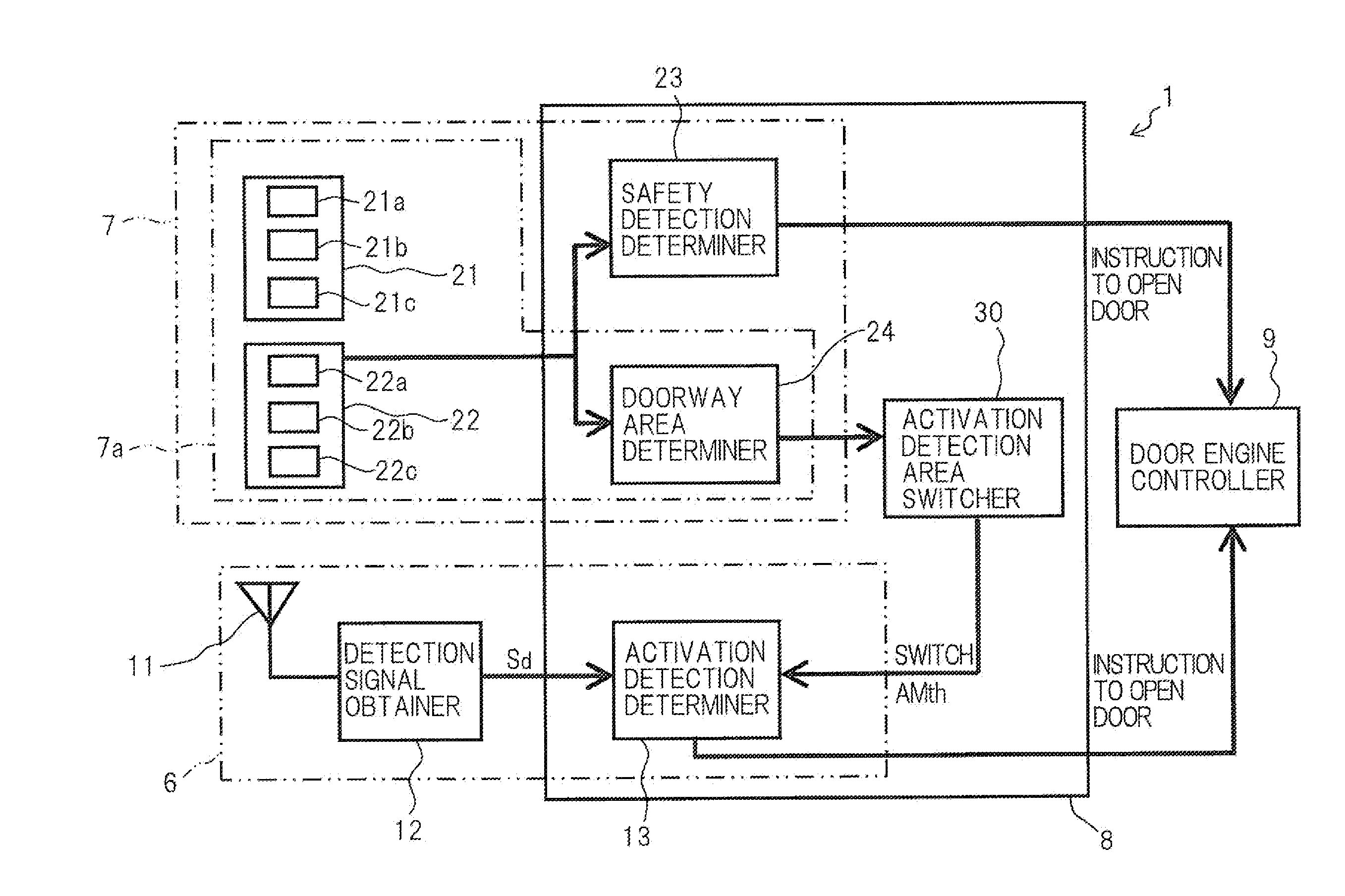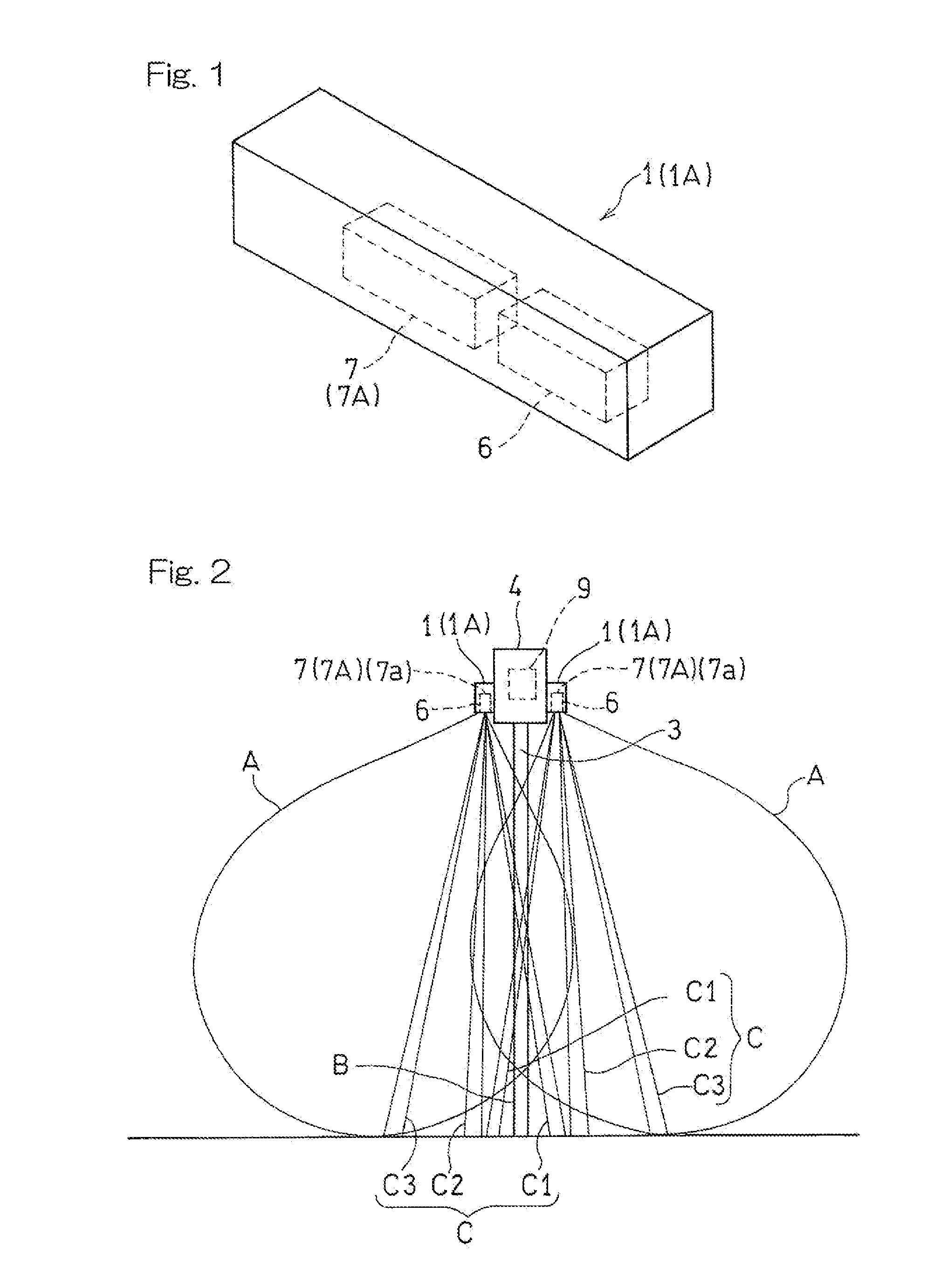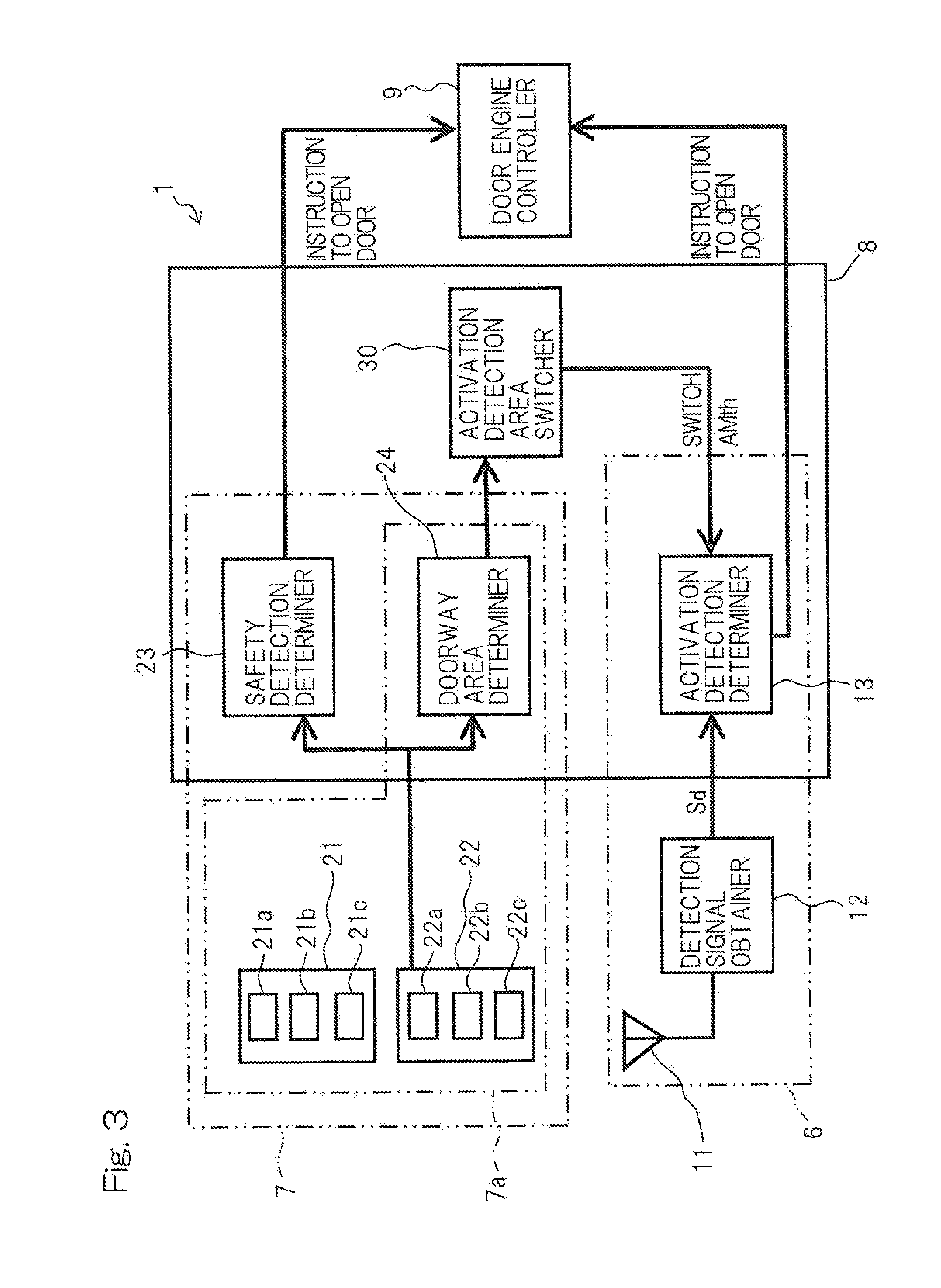Automatic door sensor device
a door sensor and automatic technology, applied in the direction of door/window fittings, building components, construction, etc., can solve the problems of inability to easily perceive the limit within which an object can be detected by the microwave sensor, the infrared sensor mounted on the transom may malfunction, and the inability to accurately detect objects
- Summary
- Abstract
- Description
- Claims
- Application Information
AI Technical Summary
Benefits of technology
Problems solved by technology
Method used
Image
Examples
Embodiment Construction
[0038]Hereinafter, an automatic door sensor device according to a first embodiment of the present invention will be described with reference to the drawings.
[0039]FIGS. 1 and 2 show the automatic door sensor device according to the first embodiment of the present invention and detection areas thereof. The automatic door sensor device 1 according to the present embodiment shown in FIG. 1 is attached, for example, to the inner-side face and the outer-side face of a transom (support member) 4 supporting the upper end of a sliding automatic door 3 shown in FIG. 2. The device 1 detects an object, so that opening and closing of the automatic door 3 are selectively controlled. The automatic door sensor devices 1, 1 are connected to a controller 9 of a door engine (not shown) accommodated within the transom 4. These two automatic door sensor devices 1, 1 are substantially identical, and therefore, only one of the sensors will be described in the following. It should be noted that the automa...
PUM
 Login to View More
Login to View More Abstract
Description
Claims
Application Information
 Login to View More
Login to View More - R&D
- Intellectual Property
- Life Sciences
- Materials
- Tech Scout
- Unparalleled Data Quality
- Higher Quality Content
- 60% Fewer Hallucinations
Browse by: Latest US Patents, China's latest patents, Technical Efficacy Thesaurus, Application Domain, Technology Topic, Popular Technical Reports.
© 2025 PatSnap. All rights reserved.Legal|Privacy policy|Modern Slavery Act Transparency Statement|Sitemap|About US| Contact US: help@patsnap.com



